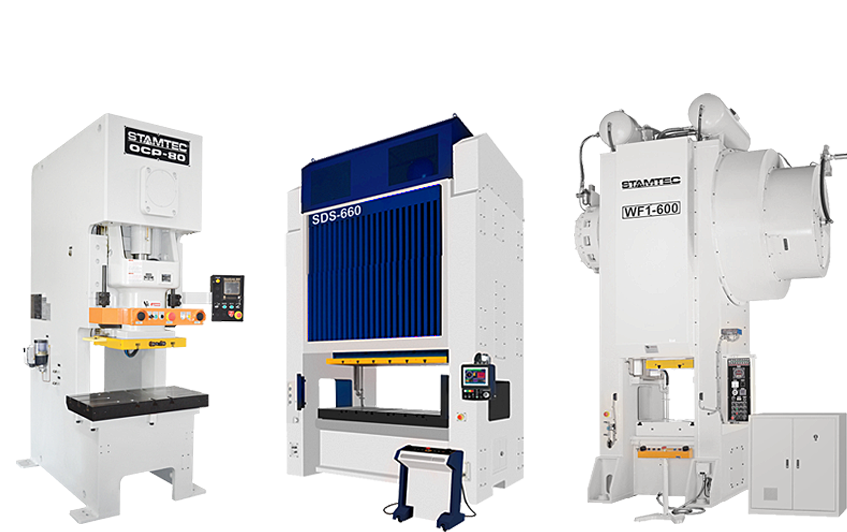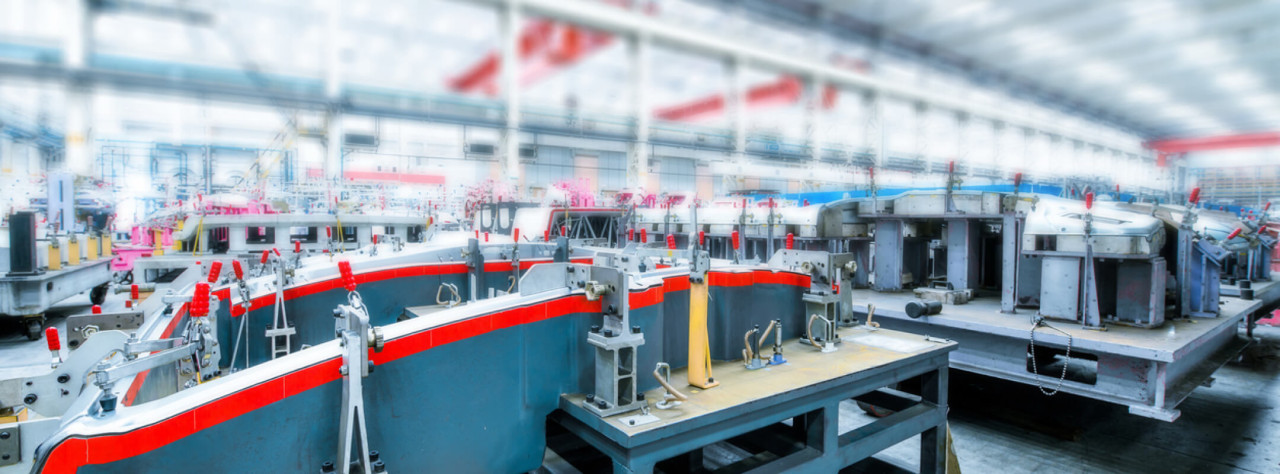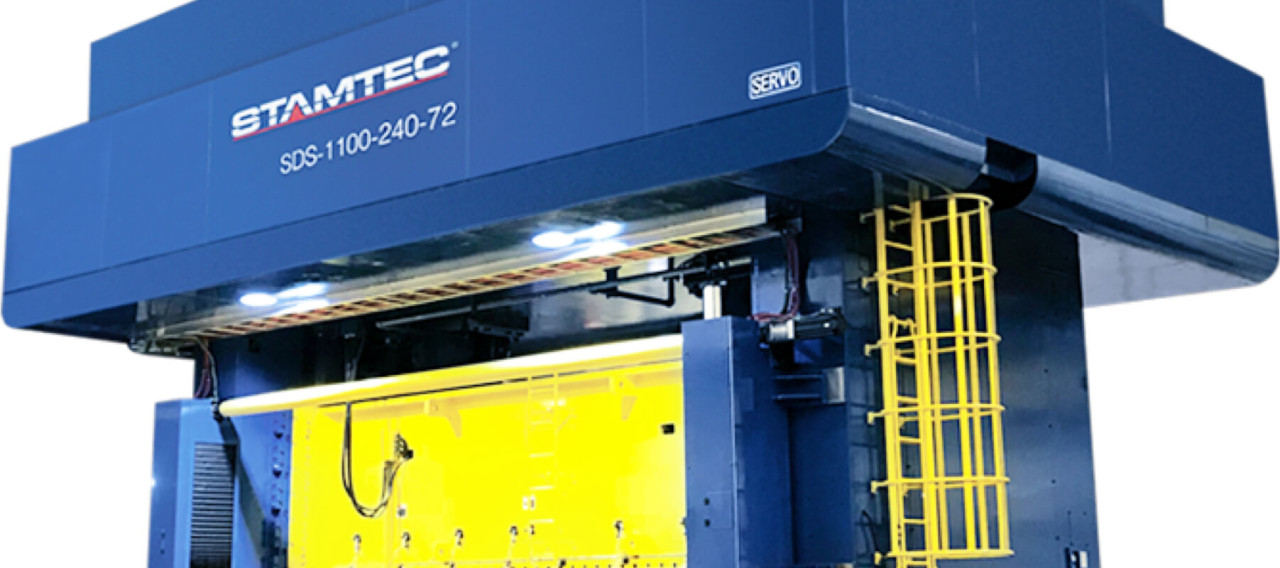

In automotive stamping, the press you choose is the backbone of your entire production line. From small components to full structural assemblies, selecting the right automotive press machine impacts your uptime, part quality, throughput, and bottom line.
The challenge? Today's stamping environments are more demanding than ever. High-strength steels, tighter tolerances, and increasing volumes mean your press needs to deliver power, precision, and reliability—every single shift. And with so many variables in play—tonnage, speed, die complexity—it's not a decision you can afford to get wrong.
Let's walk through the three most critical factors when evaluating metal stamping for the automotive industry: tonnage, speed, and accuracy. We'll also show how Stamtec's high-performance presses are built to suit the rigorous demands of the automotive stamping process, whether you're operating at a tier supplier or OEM level.
If you're aiming to reduce downtime, improve part consistency, and refine overall line efficiency, this guide will help you make the right call—with long-term success in mind.
Table of Contents

Whether you're forming body panels, chassis components, or structural brackets, every part needs to meet exacting standards in shape, strength, repeatability, and finish. Automotive stamping relies on converting flat sheet metal into complex, high-performing parts using dies, pressure, and motion.
As automakers push for lighter materials like aluminum and advanced high-strength steel (AHSS) and demand ever-tighter tolerances, presses must keep up with volume and complexity. Selecting a press that's optimized for your production environment ensures efficiency, accuracy, and profitability—and leaves no room for guesswork.
When you're evaluating automotive stamping presses, there are a lot of specs you could obsess over—but three stand above the rest: tonnage, speed, and accuracy. These are the non-negotiables that determine how well your press performs day in and day out. Let's break each one down.
Tonnage is the first box to check, and for good reason. If your press can't deliver enough force at the right point in the stroke, you're setting yourself up for trouble—think incomplete forms, die damage, or worse.
The key is calculating your required tonnage based on part material, thickness, blank size, and die complexity. Undershoot it, and your press strains every cycle. Overshoot it, and you might be wasting energy or budget. When you're working with advanced high-strength steel or multi-draw parts common in automotive stamping, there's even less room for error.
Stamtec's presses are built to handle various tonnage requirements—from compact applications to high-tonnage automotive pressings—so you're covered no matter what's on your production schedule.
When working with metal stamping presses, speed matters—but only if you can maintain control and precision. Faster stroke rates mean more parts per hour, but if speed comes at the expense of accuracy or tool longevity, it's a hollow win.
That's where servo technology really shines. Stamtec's servo presses offer customizable stroke profiles, slower speeds during forming, and quicker return speeds—so you get faster throughput without overloading your tooling. And when you're dealing with high-volume automotive stamping parts, shaving even a fraction off of each cycle adds up to serious gains.
Modern automotive metal stamping demands tight tolerances, especially for structural parts and safety-critical components. Your press has to be rock-solid, stroke after stroke, to meet quality benchmarks and avoid rework.
Stamtec's servo control systems and rigid frame construction ensure exceptional slide accuracy and tonnage consistency across every stroke. Whether you're producing structural parts for OEMs or Tier 1 suppliers, precision and repeatability are a must—and Stamtec presses deliver.
Need to compare models or build specs? Stamtec lays it out clearly in this Press Comparison Guide (PDF).
As one of the leading metal stamping press manufacturers with decades of expertise and a large in-stock inventory in North America, Stamtec is a trusted partner for automotive metal stamping. Whether you're outfitting a new facility or upgrading an existing line, Stamtec's solutions are purpose-built for the rigorous demands of automotive production.
From traditional mechanical presses to advanced servo-driven models, Stamtec's versatile offerings meet varying tonnage, speed, and accuracy needs. These presses are engineered for long-term durability, reliable performance, and easy integration with coil feeds, transfer systems, and downstream automation equipment. For shops running automotive pressings requiring multi-hit operations or progressive dies, Stamtec's engineering team can help optimize configurations to maximize part quality and output.
Stamtec's commitment extends beyond equipment supply. Our team ensures seamless installation, training, and preventative maintenance so you're supported at every step of your press's lifecycle. Plus, with ready-to-ship inventory at our Tennessee facility, Stamtec minimizes lead times—helping manufacturers avoid costly downtime.
To choose the right automotive press machine, you need a clear understanding of your current requirements and where your operation is headed. Here's how to approach the evaluation.
Are you stamping structural components, trim pieces, or smaller brackets? Each application puts different demands on your press in terms of force, precision, and flexibility. For shops producing various automotive stamping parts, a versatile press with customizable stroke settings—like a servo model—provides more long-term value.
Your production goals will define your priorities. High-volume runs require presses with fast cycle times and minimal changeovers, while moderate production may benefit more from flexibility than pure speed. Stamtec offers systems optimized for fast setups and consistent performance across diverse production needs.
Whether you're stamping AHSS, aluminum, or mild steel, understanding material properties is crucial in determining the tonnage and tooling your press requires. Ensure your press can handle the forming characteristics of both your current and future material lineup, particularly as lightweighting and electric vehicle (EV) applications continue to evolve.
Your press doesn't work alone; it's part of a larger ecosystem. Plan for how the machine will integrate with coil handling, transfer systems, and automation solutions. Stamtec's presses are designed with easy configurability in mind, helping streamline layouts and production flow.
Press decisions are long-term investments, so fast service and strong support are non-negotiables. Can your press supplier provide on-demand help, stocked replacement parts, and quick delivery? Stamtec's responsive service team and readily available inventory ensure you're never left waiting.
Explore Stamtec's lineup to see how our cutting-edge technology can help you meet the demands of modern automotive stamping. Need to compare capabilities? When you're ready to level up your metal stamping presses, Stamtec is here to help you make the right move—for today and the long haul.
Shop All Stamtec PressesWhether you're new to the field or refining your production strategy, understanding the basics of automotive stamping can help you make more informed decisions about equipment, materials, and processes. Below are answers to a few common questions.
Automotive stamping is a manufacturing process that forms flat sheet metal into specific shapes used in vehicle construction. Using a metal stamping press, you can create body panels, brackets, frames, and reinforcements by applying pressure through custom dies. The goal is to produce precise, repeatable automotive stamping parts at high volumes while maintaining structural integrity and dimensional accuracy.
Hot stamping in the automotive industry is a specialized forming method to shape ultra-high-strength steel. The metal is heated to over 900°C (1,652°F), stamped while malleable, and rapidly cooled within the die to lock in its strength. This technique is used in automotive stamping for safety-critical components like A-pillars, B-pillars, and crash beams, where maximum strength-to-weight ratio is essential.
The types of metal used in automotive stamping vary based on the part's function and structural requirements. Common materials include mild steel, high-strength low-alloy (HSLA) steel, advanced high-strength steel (AHSS), aluminum, and stainless steel. Each material offers different advantages in strength, weight, formability, and corrosion resistance—making material selection a critical factor in the automotive stamping process.